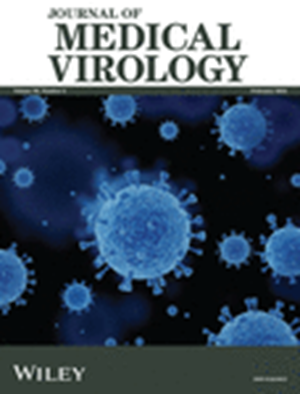RSV-Induced Glutaric Acid Modulates Neuronal Mitochondrial Heterogeneity via the Lung−Brain Axis
Abstract
The study was designed to explore how glutaric acid induced by respiratory syncytial virus (RSV) infection affects nerve cell mitochondrial heteroplasmy. An RSV infection animal model was established, and lung tissues were collected after 7 days for metabolomic analysis. Then, a neuroinflammatory cell model was constructed with lipopolysaccharide (LPS). The CCK8 assay detected proliferation, the DCFH-DA probe assessed reactive oxygen species (ROS) levels, and ELISA measured IL-1, IL-4, IL-6, and IFN-γ levels in HT-22 cells. RT-qPCR detected Drp1 and Mfn2 expression levels to study the mechanism of glutaric acid-exacerbated neuroinflammation. Immunofluorescence and RT-qPCR detected the effects of glutaric acid on neuron biomarkers in the lung (PGP9.5) and brain (NeuN). Bioinformatics screened glutaric acid-interacting proteins, and the enzymatic activities of NAD-dependent malate dehydrogenase (NAD-ME) were validated at cellular and animal levels. High-performance liquid chromatography (HPLC) detected glutaric acid content in blood and brain tissues. After glutaric acid treatment, Drp1 protein expression increased, Mfn2 decreased, and ROS, IL-1, and IL-6 cytokine levels rose significantly. Glutaric acid affects the central nervous system by disrupting the lung neural network, causing mitochondrial homeostasis dysregulation. Its interaction with NAD-ME accelerates mitochondrial imbalance. Glutaric acid induced by RSV infection aggravates neuroinflammation by affecting nerve cell mitochondrial homeostasis via the lung−brain axis. These findings offer new insights into RSV-induced neuroinflammation and potential targets for neuroprotective strategies.


 求助内容:
求助内容: 应助结果提醒方式:
应助结果提醒方式:


